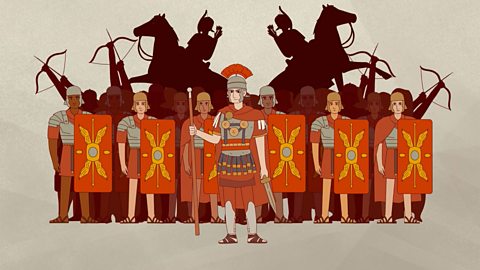Exploring everyday life in Ancient Rome including homes, entertainment, religion and architecture.
JULIA: I’m in Rome, which is the capital city of Italy. And you’ve arrived just at the right time!
This is a mosaic, which is a decoration made of lots of little coloured tiles. We find many mosaics on the floors of ancient Roman buildings. They often show scenes from well-known stories, or even just pictures from everyday life at the time…and if I’m not mistaken, this is the head of a wolf, a wolf that plays a very important role in the story of Rome and the Roman Empire.
According to legend, she’s the wolf that saved twin baby boys and fed them after they were abandoned and left floating down the river Tiber, the river that runs through Rome. A shepherd called Faustulus found the wolf looking after the boys. He took the boys home, where he and his wife raised them like they were their own children. But these were no ordinary boys, they were Romulus and Remus…and, according to the story, their real father was none other than…MARS, THE GOD OF WAR!
They built a town right on the spot where they had been saved by the wolf. But one day Romulus and Remus argued and started fighting. Remus was killed, leaving Romulus in control of what was now a city. A city that bore his name. THE CITY OF ROME!
The story of Romulus and Remus is an exciting one, but historians think it was made up – to help explain when and how the city came to be built.
According to the Roman scholar, Marcus Terentius Varro, Rome was founded on April the 21st 753 BCE…but he wrote about the story of Romulus and Remus around six hundred years later, so we can’t really be sure this is true. But we do know the city of Rome grew to be the biggest city the world had ever seen.
By the 4th Century CE, it spanned seven hills, covered 25 square kilometres, and was protected by nearly 18 kilometres of walls. The wealthier people lived in houses called domus which had plenty of space. They had rooms like the triclinium, where people would eat together, while lying down. Or the atrium, where the family would entertain guests.
But if you didn’t have that kind of money, you might live in an insulae, where lots of families lived in a building with multiple floors. Wealthier families lived on the bottom floors, with poorer residents living higher up, which could be risky if there was a fire.
MAN: FIRE!!!
JULIA: But Rome did have a fire brigade (of sorts)…
In fact, it had many things a modern city has - like markets, bakeries, libraries and schools, but only for boys from families who could afford it. There were public baths and even public toilets and sewers. All that water had to come from somewhere, so aqueducts were built to carry water to this thirsty city.
For entertainment, there were theatres where you could watch plays or listen to music.
AUDIENCE MEMBER: SSSSHHHHH!
JULIA WHISPERING: Sorry!
JULIA: There were arenas like the Colosseum - where gladiators fought, sometimes to the death. And the Circus Maximus - where chariots raced in front of two hundred thousand people.
The Romans had their own gods, like Neptune, god of the sea, and Venus, the goddess of love…although they were very similar to the Ancient Greek ones. People could worship their gods at the many temples around the city.
Ancient Rome certainly was a bustling, busy place full of people from all over the world and we know this because of things like the writings of Roman scholars, items archaeologists have found and extraordinary buildings that still remain today, centuries later.
No wonder Ancient Rome has fascinated and amazed us for over two thousand years!
1: Society and culture
Our animated guide, Julia, is working on an archaeological dig in Rome when she uncovers a mosaic showing the head of a wolf.
This leads Julia to recount the ancient story that Rome was founded by two brothers called Romulus and Remus in 753 BCE, after they had been found and saved by the wolf from the River Tiber when they were babies.
Julia is transported back to Ancient Rome where she explores the homes of both rich and poor Roman citizens, the sorts of entertainments enjoyed by the Romans and the infrastructure needed to maintain a rapidly expanding city.
Duration: 4' 05"
Final words: '…for over two thousand years!'
Video questions
- What are the names of the two brothers said to have founded Rome? (Romulus and Remus)
- What part does a wolf play in their story? (The wolf saved the boys from the River Tiber when they were babies)
- What year is Rome said to have been founded? (753 BCE - 'Before Common Era')
- What is the name of the home a rich family might live in? (Domus)
- What is the name of the home a poorer person might live in? (Insulae)
- What is the name of the arena where gladiators fought? (Colosseum)
- What structures brought water to the city? (Aqueducts)
This film is relevant for teaching History within the National Curriculum at KS2 in England and Northern Ireland and equivalent levels in Scotland and Wales.
Further resources
Teacher Notes. document
Download / print the Teacher Notes prepared in partnership with Classroom Secrets (pdf)
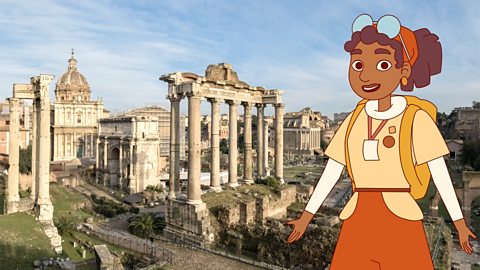
Transcript
Click to download / print the episode transcript

Song: 'Roman gods and goddesses' video
Learn a song about Roman gods and goddesses from our musical 'Rocking Romans!'
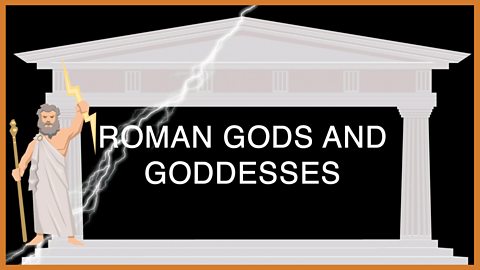
8. The slave and the architect. video
Exploring the life of a slave working for an architect in Ancient Rome and waiting for his freedom.
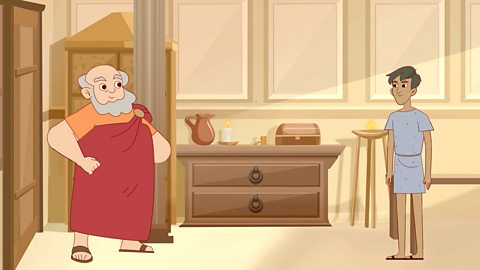
2. The Roman Empire. video
Exploring the government of Ancient Rome and how the republic became an empire.
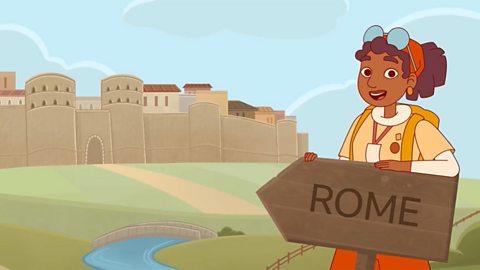
3. The Roman army. video
Exploring the formidable Roman army - its organisation, tactics, weapons and influence.
